Alaska Fish & Wildlife News
August 2023
Why is the Western Arctic Caribou Herd Shrinking?
164,000 is the lowest count since early 1980s
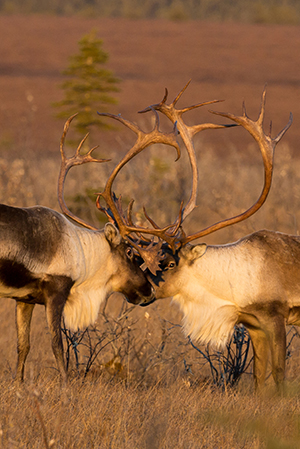
The Western Arctic Herd was the largest caribou herd in Alaska 20 years ago, numbering almost a half-million animals. A few decades before that, it was a quarter that number. Caribou herds fluctuate in size and wildlife biologists want to know why the Western Arctic Herd has been declining in recent years.
During July 2022, biologists with Alaska Department of Fish and Game took advantage of favorable weather to photograph the Western Arctic Herd (WAH). During warm weather, caribou often gather into large groups around snow fields, providing an opportunity to photograph and count the herd. This last photocensus indicated a continuation of the declining trend in recent years. The final count of 164,000 caribou was almost a 13 percent reduction from the 2021 number of 188,000. This census marks the lowest population estimate in 40 years.
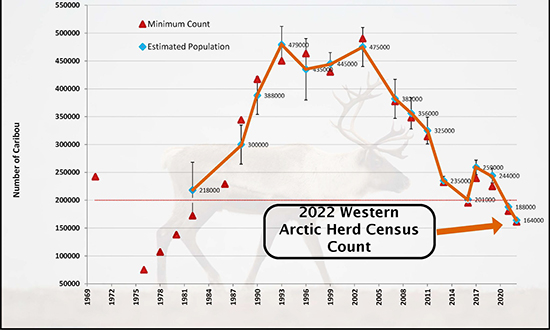
What else do we know about this herd, beyond the count? In addition to photographing and counting caribou, biologists also monitor the calving rate, calf survival, bull-to-cow ratio, and adult caribou survival as indicators of overall herd health. Recent surveys indicate that calving rates are down slightly, the number of calves that survive their first year is average, and that the bull-to-cow ratio is at a healthy level. However, one important factor that is troubling for managers is the current adult cow survival rate.
Adult cow survival can be a telling indicator of population growth or decline. Since cows are responsible for producing the next generation of caribou, they must survive at a reasonably high rate for the population to grow. During past periods of growth in the Western Arctic Herd, cow survival rates have hovered around 85 percent or higher. In recent years cow survival has averaged around 75 percent. This is too low for growth to occur, and is concerning.
Why is the cow survival rate down? So far, biologists have been unable to identify a single cause. When a collared cow dies, biologists examine evidence left at the mortality site. From what they have been able to determine, predation, natural mortality due to weather, hunter harvest, and other causes are all factors in cow deaths, but none of these seem to be happening at exceptionally high rates. Biologists also monitor for disease, and there is no evidence that sickness is behind the decline, either.
What can be done? One important thing to consider is that caribou populations normally cycle up and down. In 1975, the population estimate for the Western Arctic Herd was 75,000 - less than half the number that Alaska Department of Fish and Game staff counted last summer. Ten years later, the herd grew to 343,000, demonstrating the capacity for this herd’s population to rebound. Unfortunately, none of the tools biologists use can predict if, or when, the decline might reverse its course.

This leads us to focus on one of the few things that we can change: a concerted effort to improve caribou survival, especially cow survival, by reducing human harvest. If hunters and biologists can work together to track and reduce the harvest, the chances of a population rebound may increase.
Where are the Caribou?
In the late 1990’s, the Western Arctic Herd was expanding and ranged south of Unalakleet. Today, with the herd at just one-third the size it was at its peak in 2003, the Western Arctic Herd’s range is much smaller. This means more and more villages are not seeing caribou and are wondering where the caribou are. For example, three-quarters of the herd spent the winter of 2015-2016 on the central Seward Peninsula, but not a single collared Western Arctic Herd caribou has been there for the last five winters. The lack of available caribou has greatly impacted the subsistence harvest of many villages in the region.
Meanwhile, in other areas, it can feel like there are still plenty of caribou. During the winter of 2021-2022, Western Arctic Herd caribou were just outside, and sometimes right in, Kobuk. When this happens, it can be hard to think the herd is in decline, but the increasing number of villages asking, “where are the caribou?” tells the real story.
Fewer caribou are migrating across the Kobuk River during their fall migration. For years, over 80 percent of the collared caribou would cross the Kobuk heading south to their wintering grounds. In recent years, only about one-third have crossed the river, with less than six percent of collared caribou crossing in 2020. Most Western Arctic Herd caribou have remained in the Brooks Range during winter where they are difficult to access. Besides fewer caribou migrating, the caribou are also migrating later in the year. Just ten years ago, the first caribou often crossed the Kobuk River in late August. In 2020, the first collared caribou did not cross until the beginning of November (more than a two-month delay in the span of a decade). This remarkable change also impacts how, when, and what hunters harvest.
Biologists believe caribou choose different winter ranges largely due to food abundance, which is supported by local knowledge. Lichens, the primary winter food for caribou, are slow growing and can get depleted, so caribou may move to different areas with more lichen. Changes in winter range may also be related to climate change, and changes in the herd’s size. As traditional knowledge and western science have documented, accumulating snow and dropping temperatures help trigger fall migration. With temperatures climbing four times faster in the Arctic than the rest of the planet, snow and cold temperatures are coming later and later in the year. Snow patterns and vegetation are changing as well, both of which can impact where caribou go.
Caribou are world-class movers: they can be here today and gone tomorrow. They travel hundreds and even thousands of miles in their annual migrations. With the Western Arctic Herd in decline, it will be up to all of us to do our part to ensure they keep returning generation after generation.
Seasonal Movement
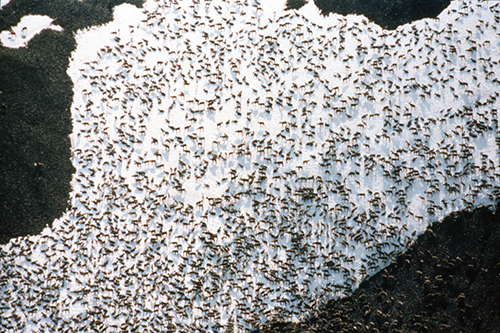
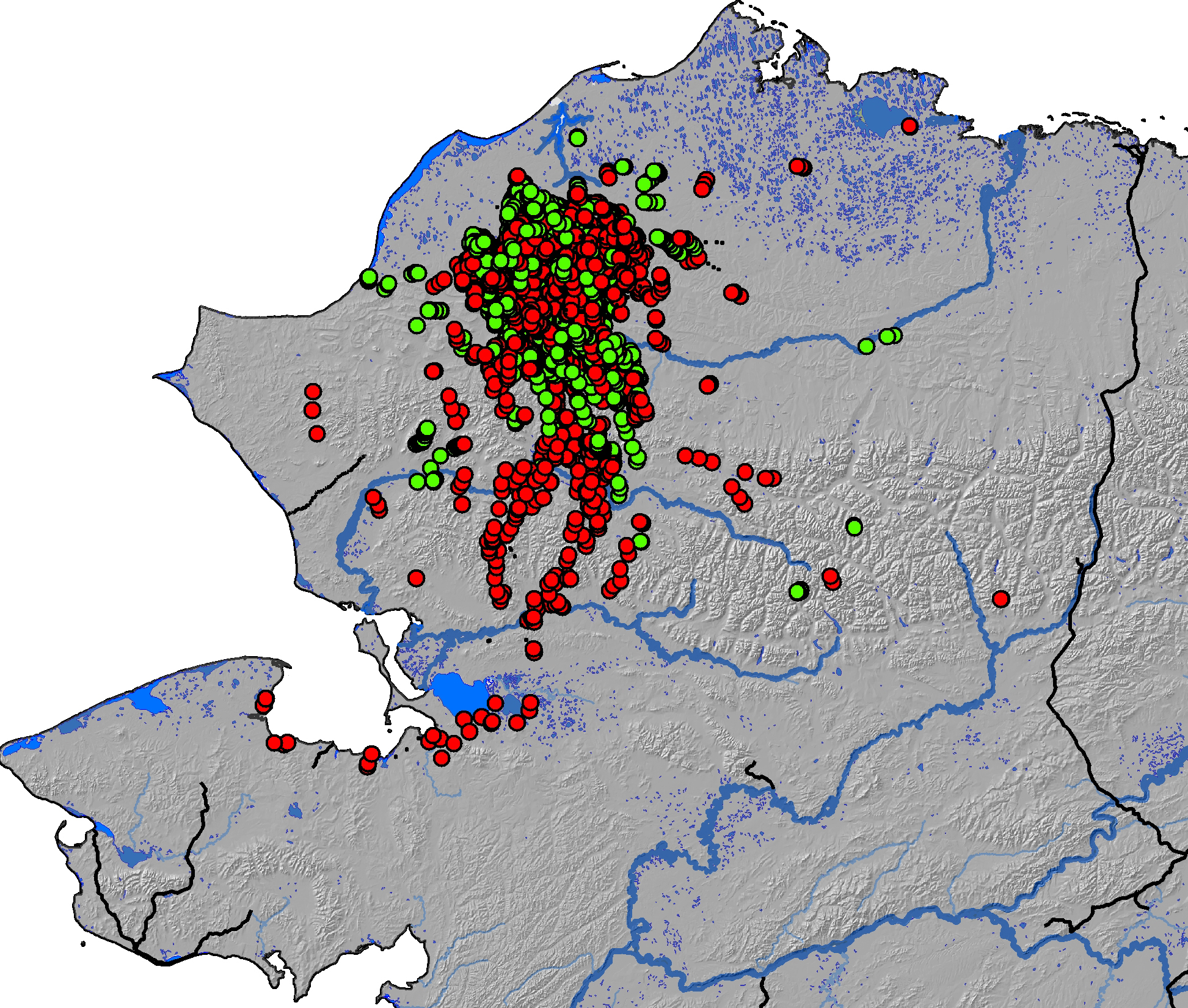
Due to various factors, Western Arctic herd caribou locations during calving are not consistent year to year. In this image, red dots show collar locations during calving over the years 2010-2017. Note locations during calving season range from the upper Koyukuk, eastern Teshepuk Lake, and as far south as the northern Seward Peninsula. Collar locations from 2018-2022 (green) still congregate mostly around the Colville River headwaters, but there are fewer outliers, and those outliers are closer to the bulk of the herd.
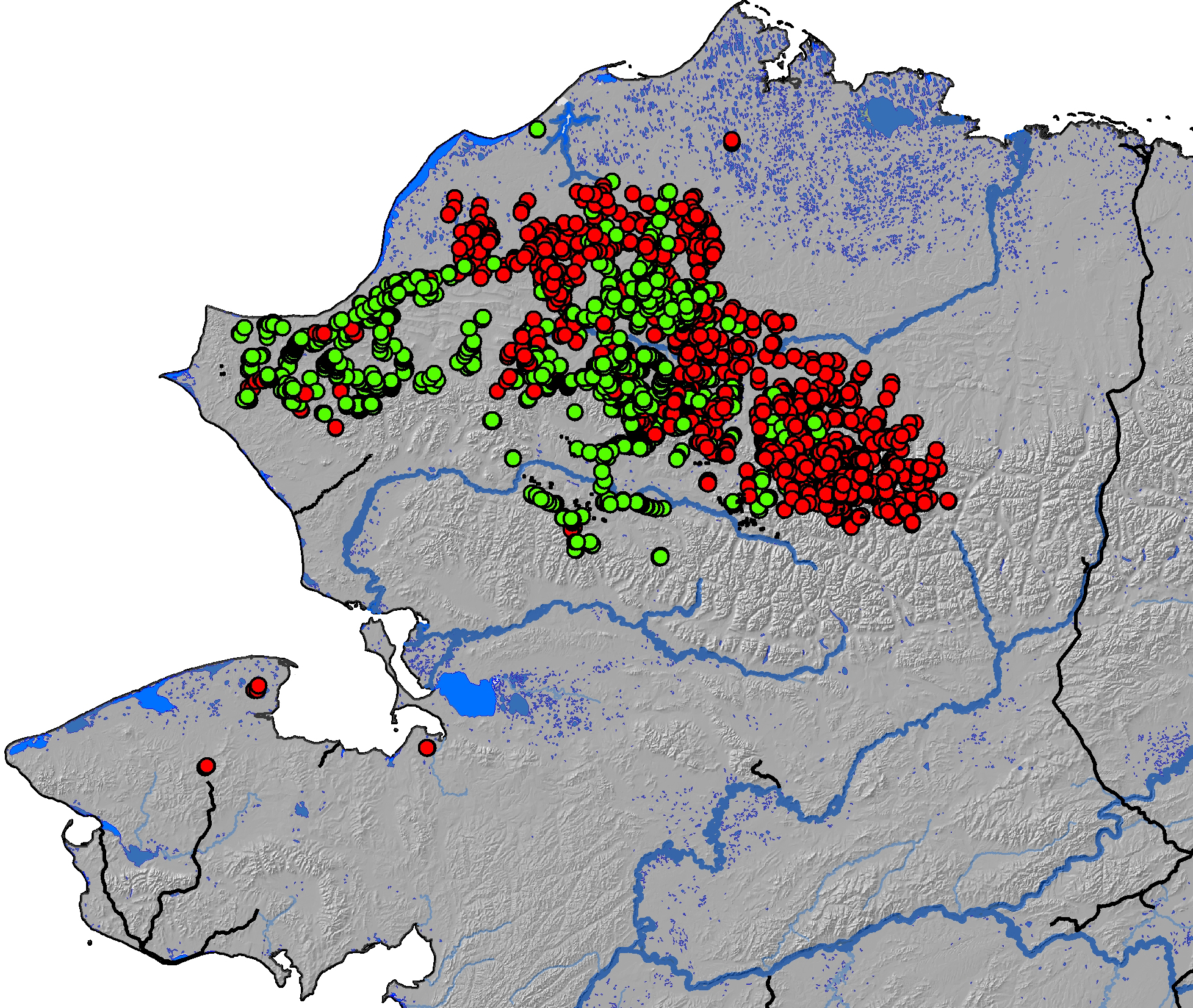
The summer collar locations of Western Arctic Herd caribou, comparing 2010-2017 summer collar locations (red) and 2018-2022 summer collar locations (green). Note that some Western Arctic Herd caribou in past years spent summers as far south as the Seward Peninsula, and the bulk of the herd stayed farther east than in 2022. Note that about a third of collared caribou migrated to the western side of the North Slope in 2022.
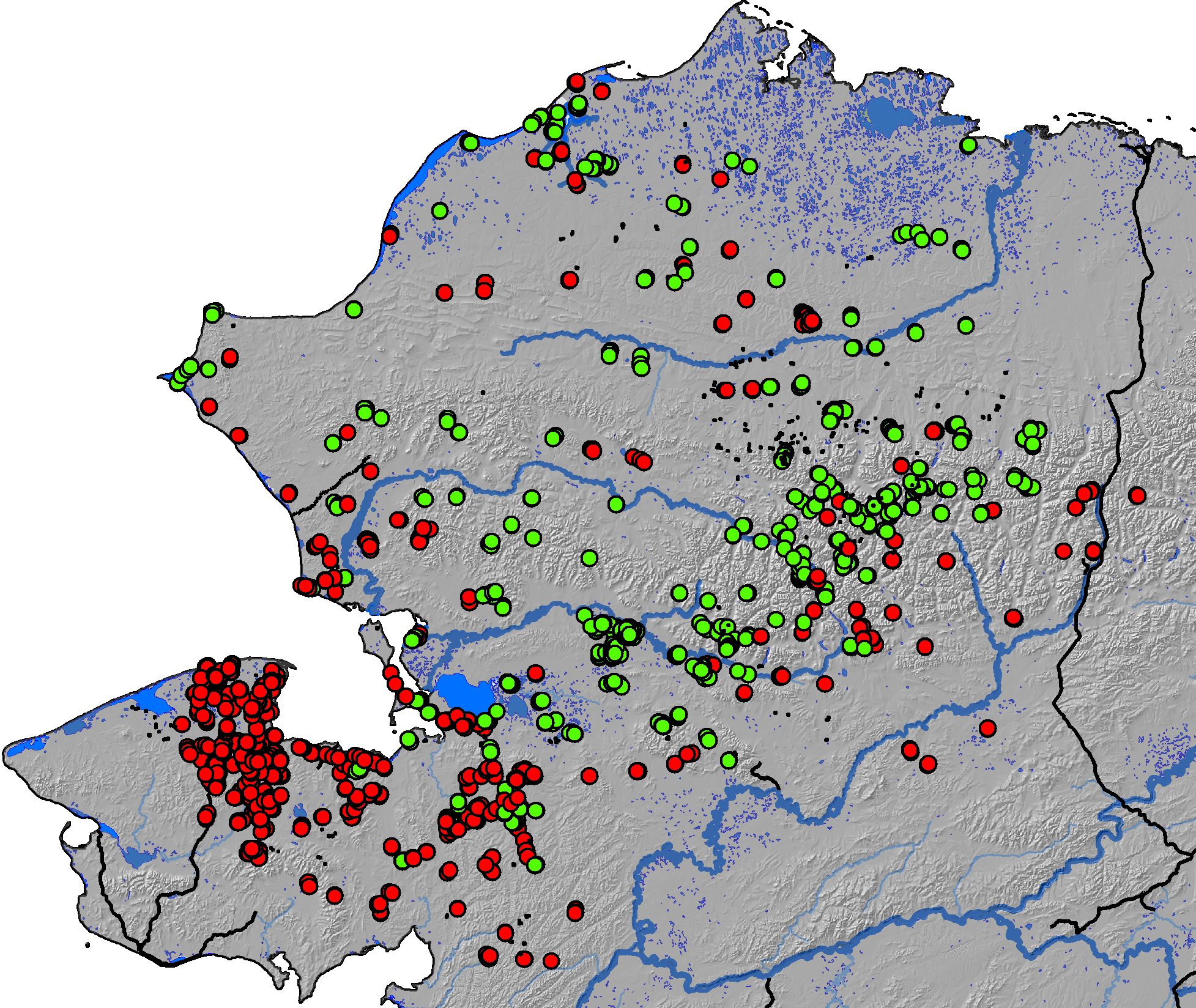
While there are some differences between 2010-2017 and 2018-2022 summer and calving collar locations, we see differences pop up immediately when comparing winter collar locations. While the bulk of the Western Arctic Herd used to overwinter south of the Brooks Range on the Seward Peninsula - near communities like Deering, Buckland, and Shishmaref - most of the herd stayed north of the Brooks Range from 2018-2022. There was no centralized group, with many different smaller portions of the herd scattered across the North Slope and Brooks Range.
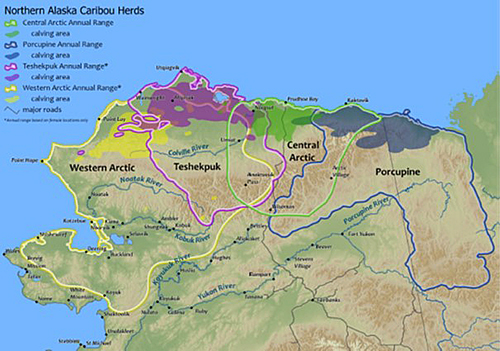
Northern Alaska caribou herds. Note that each herd has a largely distinct calving area. These areas help to separate one herd from another, even when caribou from separate herds might forage side by side at other parts of the year.
Subscribe to be notified about new issues
Receive a monthly notice about new issues and articles.
